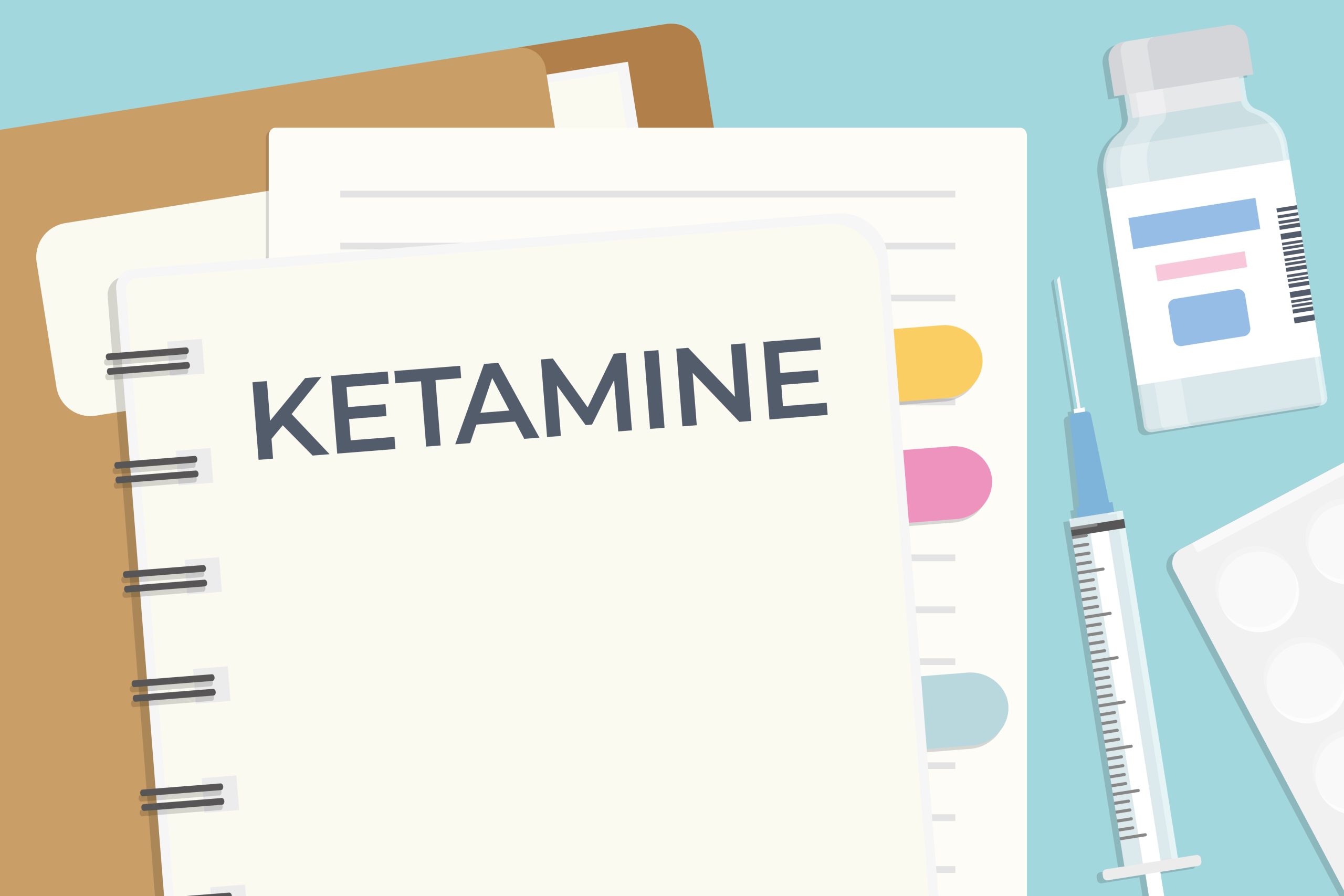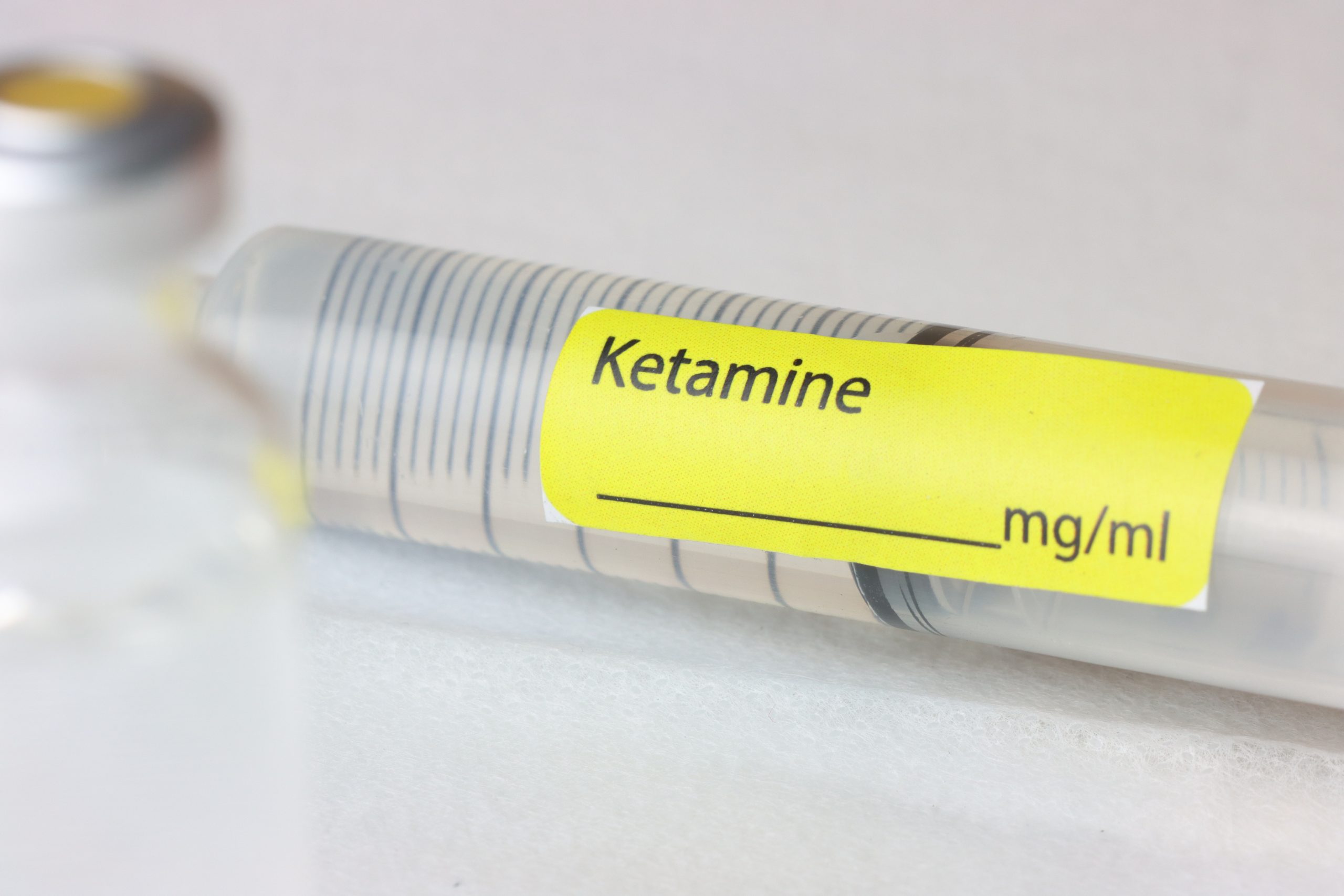Home | Specialties | Pain Management | Ketamine Infusion
What is Ketamine Infusion?
Ketamine Infusion is an innovative and effective treatment for chronic pain and certain mental health conditions. Originally used as an anesthetic, ketamine has been found to have powerful pain-relieving and mood-enhancing properties at sub-anesthetic doses. During a ketamine infusion, the medication is administered intravenously, allowing for precise control over dosage and immediate therapeutic effects. This treatment can provide significant relief for patients who have not responded to other forms of pain management.

Why Might You Need Ketamine Infusion?
Ketamine Infusion may be recommended if you experience:
- Chronic Pain: Persistent pain conditions, including neuropathic pain, fibromyalgia, and complex regional pain syndrome (CRPS).
- Depression and Anxiety: Severe mood disorders that have not improved with traditional therapies.
- PTSD: Post-traumatic stress disorder symptoms that are resistant to other treatments.
- Migraine: Chronic migraines that do not respond to conventional treatments.
Our Pain Management Locations
Find a Pain Management Surgeon
Medical Uses
Anesthesia
Ketamine is widely used as a dissociative anesthetic in surgeries and medical procedures. It induces a trance-like state while providing pain relief, sedation, and amnesia. It is particularly useful for emergency situations, as it does not significantly depress breathing or blood pressure.
Pain Management
Ketamine is used in low doses to manage acute and chronic pain, especially in cases where opioids are not effective or appropriate.
Psychiatric Uses
Depression and Anxiety
Ketamine, especially in the form of esketamine (a derivative), has been approved for treating treatment-resistant depression.
It is administered in controlled doses (e.g., as a nasal spray or via intravenous infusion) to produce rapid relief of depressive symptoms, often within hours.
Post-Traumatic Stress Disorder (PTSD)
Emerging evidence suggests ketamine may help reduce symptoms of PTSD, though this is still an area of ongoing research.
Other Mental Health Conditions
Ketamine is being explored as a treatment for conditions such as bipolar disorder and obsessive-compulsive disorder (OCD).
How It Works
Ketamine works via a different pain pathway than other commonly used pain medications including opioids (morphine, oxycodone), gabapentin/pregabalin (Neurontin/Lyrica), anti-inflammatories (Ibuprofen), or anti-depressants (Cymbalta, Elavil). Ketamine affects the brain by acting on N-methyl-D-aspartate (NMDA) receptors, which are involved in pain perception, mood regulation, and memory. It also promotes the release of certain neurotransmitters, such as glutamate, which play a role in neural plasticity and mood stabilization.
Recreational Use and Risks
Ketamine is sometimes misused recreationally due to its dissociative and hallucinogenic effects. This misuse can lead to:
- Addiction or dependence
- Cognitive impairment
- Urinary tract problems (e.g., bladder damage)
- Psychological issues, such as confusion or dissociation
Legal Status
In most countries, ketamine is classified as a controlled substance, meaning its use is regulated due to the potential for misuse. If you’re considering ketamine for medical or psychiatric purposes, it’s essential to do so under the guidance of a qualified healthcare provider.
Benefits of Ketamine Infusion in Pain Management
Ketamine infusion therapy is increasingly being recognized as a treatment for various medical and psychological conditions. Below are some of the potential benefits:
Recreational Use and Risks
- Rapid Relief for Depression: Ketamine is often used to treat treatment-resistant depression, with patients frequently experiencing relief within hours or days compared to the weeks required for traditional antidepressants.
- Treatment for Anxiety Disorders: Ketamine infusions may help individuals with generalized anxiety disorder (GAD), social anxiety, and other forms of anxiety.
- Effective for PTSD: Research indicates ketamine may reduce the symptoms of post-traumatic stress disorder (PTSD) by affecting brain pathways involved in memory and mood.
- Helps with Suicidal Ideation: Ketamine is unique in its ability to rapidly reduce suicidal thoughts, offering a critical intervention for individuals in crisis.
Pain Management
- Chronic Pain Conditions: Ketamine infusions are used for managing chronic pain syndromes such as fibromyalgia, migraines, opioid induced hyperalgesia (a phenomenon that can occur where pain is felt more strongly after being on opioid for an extended period of time), post-stroke pain, complex regional pain syndrome (CRPS), peripheral neuropathy, and other neuropathic pain.
- Reduction in Opioid Use: By providing an alternative pain relief option, ketamine may reduce the need for opioid medications.
Neuroplasticity
Ketamine promotes the growth of new connections between brain cells (synaptogenesis), which may underlie its therapeutic effects in mood disorders and pain
Anti-Inflammatory Effects
Research suggests ketamine may reduce inflammation in the body, which is increasingly being linked to depression and other chronic conditions.
Safe and Well-Tolerated
When administered in a clinical setting by trained professionals, ketamine is generally considered safe, with minimal and short-lived side effects like mild dissociation or nausea.
Potential for Addiction Treatment
Preliminary studies show ketamine may help reduce cravings and withdrawal symptoms for substances like alcohol and opioids, offering hope for addiction treatment.
Risks of Ketamine Infusion
Ketamine infusion therapy is used for a variety of conditions, including treatment-resistant depression, chronic pain, PTSD, and anxiety. While it has shown promise, it is not without risks. Below are some potential risks and side effects associated with ketamine infusions:
Short-Term Risks
1. Dissociative Effects:
- Ketamine can cause a sense of detachment from reality or oneself, often described as a “dissociative state.”
- Some patients report experiencing hallucinations or vivid dreams during the
2. Psychological Effects:
- Anxiety, confusion, or agitation during or after the
- Some individuals may experience emotional instability or an intense emotional
3. Physical Side Effects:
- Nausea and vomiting (sometimes pre-medications are given to counteract this).
- Increased blood pressure and heart rate during the
- Drowsiness, dizziness, or
4. Headaches:
- Some patients experience headaches following an
5. Respiratory or Cardiovascular Issues:
- Rare but possible, especially in patients with preexisting health Ketamine may depress breathing at high doses.
Long-Term Risks
1. Dependence or Abuse Potential:
- Ketamine has potential for misuse or abuse, especially if taken recreationally or outside medical supervision.
2. Cognitive Effects:
- Long-term use could potentially impair memory, learning, or
3. Bladder and Urinary Issues:
- Chronic ketamine use can cause cystitis (bladder inflammation) or urinary tract problems, though this is more common in recreational use than controlled medical use.
4. Tolerance:
- With repeated infusions, some patients may develop tolerance, requiring higher doses for the same effect.
Other Considerations
- Psychiatric Conditions: In rare cases, ketamine can exacerbate symptoms of psychosis or mania, particularly in individuals with a history of bipolar disorder or
- Allergic Reactions: Though rare, some patients may have an allergic reaction to ketamine or the infusion components.
- Cost and Accessibility: Ketamine infusions can be expensive and are not always covered by insurance, leading to financial strain.
Precautions
- Preexisting Conditions: Patients with heart disease, uncontrolled hypertension, or severe liver issues should discuss risks carefully with their healthcare provider.
- Monitoring: Infusions should always be conducted under medical supervision to manage side effects and ensure safety.
- Combining with Other Medications: Patients must disclose all medications and supplements they are taking to avoid adverse interactions.
Clearance for Ketamine Infusion
Clearance for ketamine infusions typically involves several steps to ensure the treatment is safe and appropriate for the patient. Here’s an outline of what is generally required:
Screening for Contraindications
Ketamine infusions may not be suitable for individuals with:
- Uncontrolled high blood
- Severe heart or respiratory
- History of psychosis or
- Pregnancy or
- A history of adverse reactions to ketamine
Medical Evaluation - with Primary Care or Cardiologist
- A comprehensive medical history is taken, including:
- Current and past medical conditions (e.g., heart disease, high blood pressure, liver or kidney issues).
- History of substance use or
- History of psychiatric conditions (e.g., depression, PTSD, anxiety, bipolar disorder).
- A list of current medications to avoid interactions (e.g., benzodiazepines or certain antidepressants may require adjustments).
- Allergies or adverse reactions to medications, including
- Testing to ensure the body can tolerate ketamine, including:
- Blood pressure and heart rate
- Liver and kidney function tests within the past 12 months and annually thereafter
- EKG (electrocardiogram) within the past 12 months and annually thereafter
Psychiatric Evaluation - With Mental Health Provider if Needed
- A consultation with a psychiatrist or mental health provider may be required to:
- Evaluate the appropriateness of ketamine
- Rule out contraindications such as active psychosis or uncontrolled bipolar
Informed Consent - Day of Procedure
- Patients are educated about the treatment, including:
- Expected benefits and potential
- Possible side effects (e.g., nausea, dizziness, dissociation).
- The need for multiple Typically 4-6 treatments are required to assess if treatment is helping, and ongoing treatments every 2-4 weeks would be needed to maintain benefits.
What to expect during a Ketamine Infusion
Getting a ketamine infusion can be an unfamiliar experience, especially if it’s your first time. Below is an overview of what to expect before, during, and after the infusion:

Before the Infusion
Preparation:
- Consultation: You’ll typically have a consultation to ensure ketamine is an appropriate treatment for your condition (e.g., depression, anxiety, PTSD, chronic pain).
- Medical History Review: The provider will review your medical history, medications, and any allergies.
- Fasting: You will need to avoid eating (and chewing gum) for 10 hours and drinking water for 4 hours before the infusion to reduce the risk of nausea. This is important and for your safety to reduce the risk of vomiting and Your treatment will be rescheduled if you are not fasting appropriately.
- You should not take any opioids (Norco, Percocet, etc) or benzodiazepines (Xanax, Valium, etc) for 6 hours prior to, or for the rest of the day after, your ketamine treatment. This is not only for your safety to reduce the risk of respiratory depression, but ketamine also works on the same pain receptors so you will not go through withdrawals and this will allow us to determine the effectiveness of your ketamine treatment.
- Transportation: You’ll need a trusted person to drive you home, usually a friend or family, as you will feel drowsy or altered afterward and likely not able to make informed and responsible decisions. Transportation with Uber, Lyft, or other non-medical transportation services will not be allowed, this is for your safety.
- Impaired decision making following ketamine: Avoid returning to work, seeing other medical professionals, or making important or binding decisions until the effects of ketamine have fully worn off as your ability to make appropriate decisions will likely be altered. Do not drive or operate machinery until the day following your ketamine infusion.
During the Infusion
1. Environment:
- You’ll be in a recliner chair in a room with quiet music and dim lighting to promote relaxation. You are encouraged to bring headphones for personal music or eye masks to help with the experience.
2. Administration:
- Pregnancy will need to be ruled out prior to the infusion with a urine sample for all women under 55 years of age without a history of hysterectomy
- Cardiac monitoring, oxygen, oxygen monitoring, and blood pressure monitoring will be set up and initial vital signs will be Your heart rate, blood pressure, and oxygen levels will be monitored throughout the infusion for safety.
- An IV catheter will be placed, typically in the hand
- You will be reclined and made comfortable for the treatment
- Relaxation medication (Versed) and anti-nausea medication will be given (typically Zofran)
- Ketamine will then be administered through your IV. The ketamine will be administered slowly over 25-30 minutes followed by 20-25 minutes of regular fluid (normal saline) while the ketamine begins to wear Total infusion time typically takes 45-50 minutes.
3. Physical Sensations:
- Common Feelings: You may feel lightheaded, relaxed, or detached from your
- Floating or Dissociation: Many people experience dissociation, where you feel disconnected from your surroundings or body. This is normal and part of the therapeutic effect.
- Mild Nausea: Some people may feel slightly nauseous; anti-nausea medication can be given if needed.
4. Mental/Emotional Effects:
- Dream-like State: You may feel like you’re in a dream, experience vivid imagery, or have profound thoughts or emotions.
- Altered Perception: Time may feel distorted, and you may have a heightened sense of awareness or introspection.
- Calmness: Many people feel deeply relaxed or euphoric.
After the Infusion
1. Immediate Recovery:
- The effects wear off gradually over 30–60 minutes after the
- You might feel groggy, lightheaded, or disoriented initially, but this typically resolves within a few hours.
2. Emotional/Mental State:
- Some people feel a “lift” in mood or clarity of thought shortly after the infusion, while others may notice changes over a few days.
3. Possible Side Effects:
- Fatigue, dizziness, mild nausea, or headaches are common but
- Rarely, some may experience mild anxiety or agitation during or after the
4. Rest and Reflection:
- Plan for a quiet, restful day post-infusion to process the
- Journaling or reflecting on thoughts/feelings that arose during the infusion can be
5. Follow-Up:
- You’ll be scheduled follow-up appointments, typically monthly, to monitor your progress and determine if additional infusions are indicated.
- Typically 4-6 treatments are required to assess if treatment will be beneficial and ongoing treatments every 2-4 weeks would be needed to maintain benefits.
Tips for a Positive Experience
- Set an Intention: Before the infusion, think about what you’d like to work on or gain from the treatment.
- Trust the Process: It’s normal to feel nervous, but the dissociative effects of ketamine are temporary and well-managed in a clinical setting.
- Communicate: Let your provider know if you feel uncomfortable or overwhelmed during the infusion—they can adjust the dose or provide support.
If you’re considering ketamine infusions, it’s important to work with an experienced provider and have a clear understanding of the risks, benefits, and alternatives. Always weigh the potential risks against the expected benefits based on your specific medical condition


